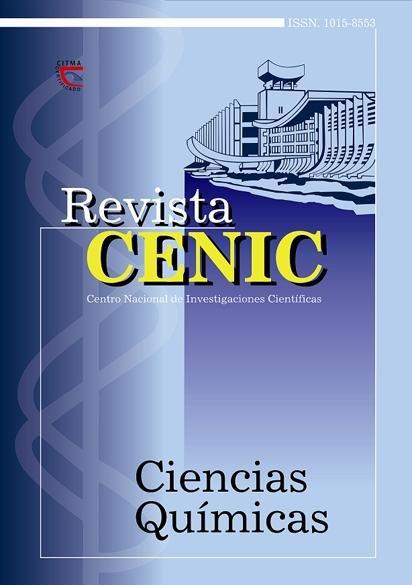Chemical and phase characterization of the sediments of the river "Martín Pérez"
Abstract
The Martín Pérez river is one of the three rivers that run into the Bay of Havana. Four sampling points were selected, one in the Guanabacoa inlet and the others up stream (one near the mouth of the river, one near the head of the river and an intermediate point). The sediment samples were kept frozen until they were lyophilized and sieved, for the analysis the fraction of less than 63 mm was taken. In the samples the total contents of organic matter, CaCO3 and humidity were determined. The samples were submitted to a three stage sequential extraction procedure, following the recommended one by the Community Bureau of Reference and in the extracts Cd, Co, Cr, Cu, Fe, Mn, Ni, Pb and Zn were analyzed by Atomic Absorption Spectrometry. In order to determine the sediments. phases composition and their relationships with the metal contents in extracts, X Ray Diffraction was used. The main mineralogical phases founded were calcite, quartz and montmorillonite; in them are associated the major fraction of the metals under study. The method was applied to the materials both before and after different steps of the selected sequential extraction procedure. These results enable for the first time to arrange the information regarding the structural and elemental composition of the sediments. It facilitates a greater knowledge of the inorganic pollution of this river.

Downloads
Published
How to Cite
Issue
Section
License
Copyright (c) 2001 Copyright (c) 2001 Revista CENIC Ciencias Químicas

This work is licensed under a Creative Commons Attribution-NonCommercial-ShareAlike 4.0 International License.
Los autores que publican en esta revista están de acuerdo con los siguientes términos:
Los autores conservan los derechos de autor y garantizan a la revista el derecho de ser la primera publicación del trabajo al igual que licenciado bajo una Creative Commons Atribución-NoComercial-CompartirIgual 4.0 que permite a otros compartir el trabajo con un reconocimiento de la autoría del trabajo y la publicación inicial en esta revista.
Los autores pueden establecer por separado acuerdos adicionales para la distribución no exclusiva de la versión de la obra publicada en la revista (por ejemplo, situarlo en un repositorio institucional o publicarlo en un libro), con un reconocimiento de su publicación inicial en esta revista.
Se permite y se anima a los autores a difundir sus trabajos electrónicamente (por ejemplo, en repositorios institucionales o en su propio sitio web) antes y durante el proceso de envío, ya que puede dar lugar a intercambios productivos, así como a una citación más temprana y mayor de los trabajos publicados (Véase The Effect of Open Access) (en inglés).













